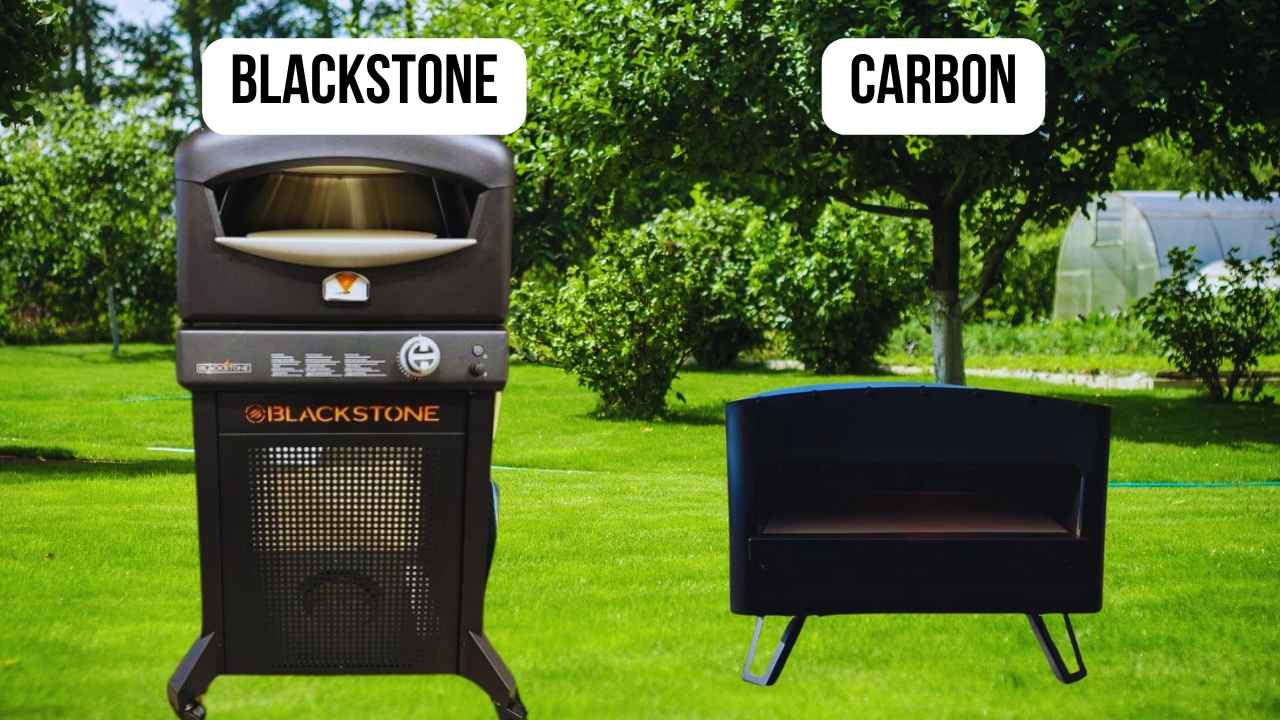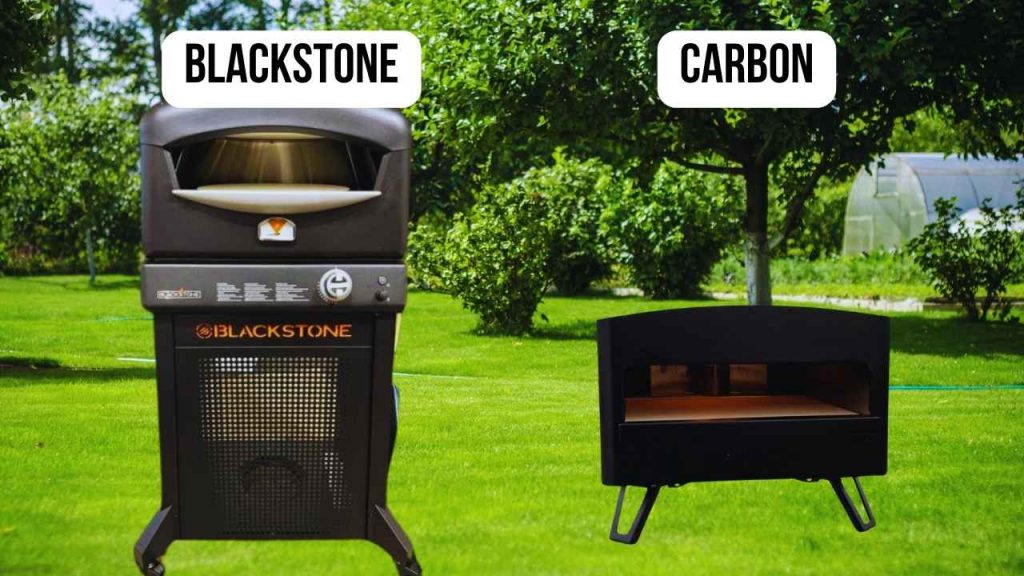As a restaurant chef with over 10 years of experience at Dequte Restaurant LironBoylston, I’ve had the chance to work with and test many outdoor pizza ovens in both professional and home environments. In this article, I’ll compare two models I’ve used extensively in my kitchen: the Blackstone Pizza Oven and the Carbon Pizza Oven. I evaluated both based on quality and materials, temperature control, shape, first-time usage impressions, power source, size, ease of cleaning, and of course, I conducted a real pizza cooking test to see how long it takes each oven to deliver perfect results. If you’re interested in my detailed testing method, I’ve also written a separate article breaking down my full oven testing process.
The Blackstone Pizza Oven is a propane-powered, high-BTU oven known for its rotating stone, fast heat-up time, and consistent results. The Carbon Pizza Oven, by contrast, is a sleek dual-fuel oven built with serious home chefs in mind—offering both gas convenience and wood flavor with a design that mimics a pro-level deck oven.
Here, I’ve done an in-depth comparison of the Blackstone Pizza Oven and the Carbon Pizza Oven, backed by my test results.
These two ovens weren’t included in the TOP-5 pizza ovens, but they’re still good picks.
Just a heads-up: I use referral links in this article. If you decide to buy one of these ovens and use my link, I’ll earn a small commission at no cost to you, which helps support my blog and allows me to keep sharing honest, hands-on reviews.
Blackstone VS Carbon: Quality and Materials
| The Blackstone Pizza Oven is built with durable stainless steel, a cast iron rotating tray, and solid double-wall insulation, making it sturdy and long-lasting. |
The Carbon Pizza Oven is made of carbon steel with visible insulation and a rust-resistant black exterior. Firebricks help distribute heat, though finish quality is more utilitarian.
|
Blackstone VS Carbon: Temperature Control
| The Blackstone Pizza Oven reaches over 900°F in just 10 minutes using its propane burner, and its heat is stable and easy to manage with minimal adjustments. |
The Carbon Pizza Oven also hits 950–1000°F and includes upper and lower burner controls, but requires more manual tweaking during sessions for best performance.
|
Blackstone VS Carbon: Shape
| The Blackstone Pizza Oven has a unique design with a rear-mounted burner and a rotating stone that cooks evenly without manual turning—great for beginners. |
The Carbon Pizza Oven has a wide rectangular shape and decent heat flow, but pizzas must be rotated manually for uniform results.
|
Blackstone VS Carbon: First-Time Usage Impressions
| While assembly of the Blackstone Pizza Oven takes some time, the learning curve is short—once lit, it’s easy to use and quick to master. |
The Carbon Pizza Oven is lightweight and easy to set up, though screwing in the stone and balancing it on four legs can be a little tricky alone.
|
Blackstone VS Carbon: Power Source
| The Blackstone Pizza Oven uses a high-pressure propane burner (60,000 BTUs) and requires no babysitting—set the temp and focus on cooking. |
The Carbon Pizza Oven also runs on propane and features separate burner dials for heat zones, but you need to manage flame intensity for stone control.
|
Blackstone VS Carbon: Size
| The Blackstone Pizza Oven is large and heavy, ideal for stationary backyard setups or professional outdoor kitchens. It cooks one 16” pizza at a time. |
The Carbon Pizza Oven is compact (fits up to 15” pizzas), portable, and easier to store—but the size limits you to smaller portions or one pizza at a time.
|
Blackstone VS Carbon: Ease of Cleaning
| The Blackstone Pizza Oven is easy to clean with a removable stone and accessible interior. Maintenance is quick and straightforward. |
The Carbon Pizza Oven is also easy to clean thanks to its included brush, though residue can stick more easily to its lower firebrick surface if not scrubbed after each use.
|
Pizza Cooking Test
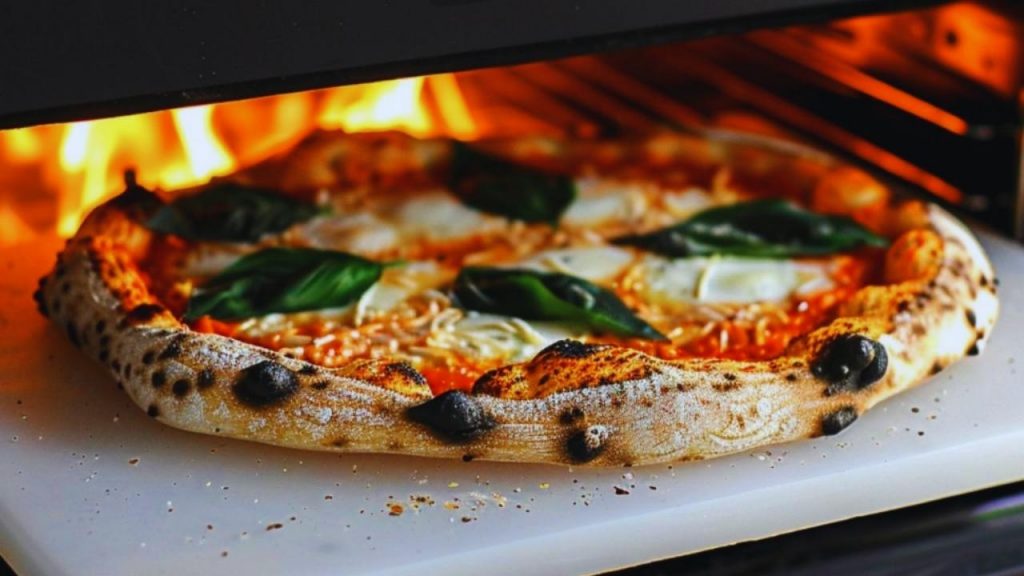
To compare performance, I tested both ovens using the same dough and ingredients to make a classic Margherita pizza. Starting with the Blackstone Pizza Oven, it impressed me right away by heating up to over 900°F in just 10 minutes. Its propane-powered burner and rotating stone made the process seamless. Once I launched the pizza, it cooked in just 70 seconds, with an evenly charred bottom, a perfectly melted cheese top, and a light, airy crust. The texture was exactly what you’d expect from a high-end outdoor oven—crispy on the outside, soft and chewy inside.
The Carbon Pizza Oven also performed well, reaching around 740–760°F in roughly 10–12 minutes. I launched the same Margherita pizza and it cooked in about 80 to 90 seconds. The top browned beautifully and the cheese melted evenly, but I had to rotate the pizza manually halfway through to prevent uneven cooking on the bottom. On the second attempt, I let the stone get a little hotter, and the crust came out firmer with a nice golden edge. The taste was excellent—less smoky than wood-fired but still rich, with a good balance of crisp and chew.
Both ovens delivered a delicious final product, but the Blackstone Pizza Oven offered slightly better ease and consistency, especially for back-to-back cooking.
How We Tested
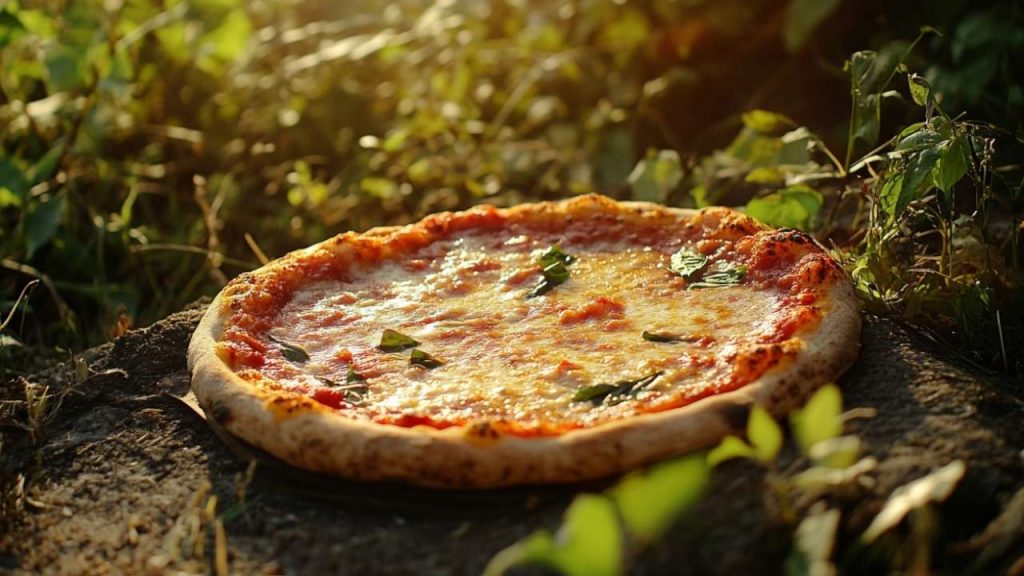
To ensure a fair and consistent comparison between the Blackstone Pizza Oven and the Carbon Pizza Oven, I used the same ingredients, dough, and preparation method for both tests. The goal was to evaluate not only how the ovens cooked a classic Margherita pizza, but also how they handled heat-up time, temperature consistency, and the overall cooking experience from start to finish.
Both ovens were tested outdoors under similar weather conditions. I preheated each oven fully—bringing the Blackstone Pizza Oven to over 900°F and the Carbon Pizza Oven to around 750–760°F based on an infrared thermometer reading of the stone surface. I made sure each stone was properly saturated with heat before launching the pizza.
I monitored how long each oven took to preheat, how evenly the heat was distributed inside, and how much hands-on effort was required during cooking. The Blackstone Pizza Oven, with its built-in rotating stone, needed no manual rotation of the pizza and allowed me to focus more on timing. In contrast, the Carbon Pizza Oven required active management to rotate the pizza manually and maintain consistent stone heat using its dual burners.
After each bake, I judged the pizza based on the doneness of the crust, melt of the cheese, browning, and flavor. This hands-on approach let me experience these ovens the way any home cook or pro chef would—side by side, under real cooking conditions.
Final Thoughts
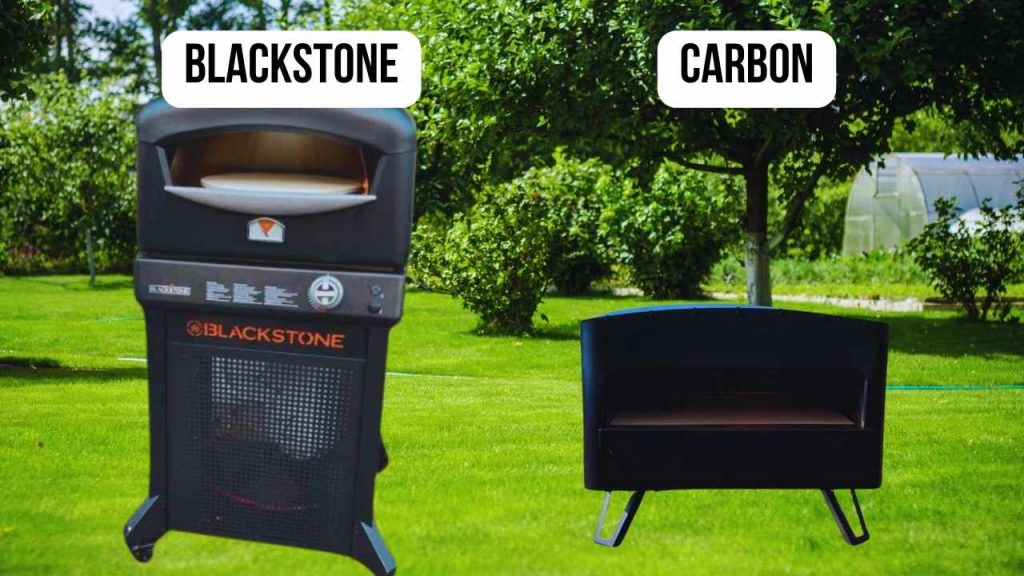
Both the Blackstone Pizza Oven and the Carbon Pizza Oven bring serious heat and performance to your outdoor cooking setup. If you’re after ease of use, speed, and consistent results, the Blackstone stands out with its rotating stone and high BTU propane burner—perfect for those who want great pizza without the learning curve. On the other hand, the Carbon Pizza Oven delivers impressive control with dual burners, a more compact footprint, and a high-heat firebrick floor that gives you flexibility and room for experimentation.
Ultimately, it comes down to what kind of pizza-making experience you want—automated and efficient with Blackstone, or hands-on and versatile with Carbon.
Whichever oven fits your style, I truly appreciate your support. If you decide to purchase one, please consider using my referral links below. I’ll earn a small commission at no cost to you, and it helps me continue writing detailed, honest comparisons like this one.
Thanks for reading—and enjoy the pizza!
Take a look at what we picked as the best pizza ovens.

